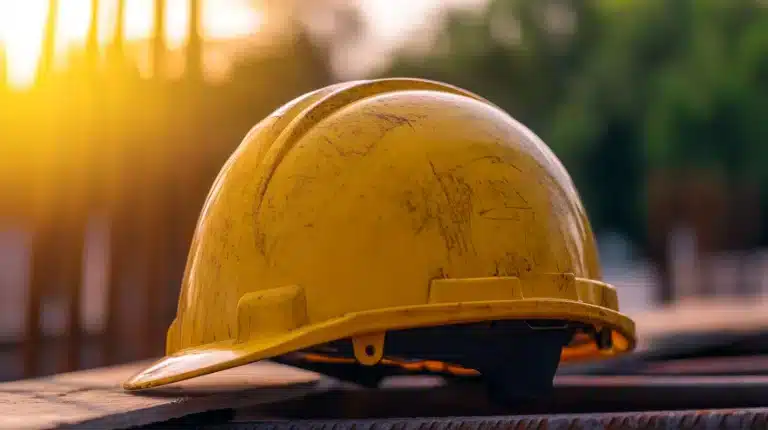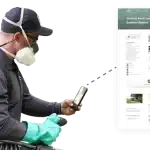Construction sites can be dangerous. Ensuring everyone stays safe requires a safety-first culture. This culture isn’t built overnight. It takes effort, commitment and constant vigilance.
Let’s dive deeper into what health and safety in construction means and how employers and employees can create a safer work environment together.
Understanding Health and Safety in Construction
Health and safety encompass a range of practices to prevent accidents, injuries and illnesses. It’s not just about wearing hard hats and reflective vests.
It’s about creating an environment where safety is a priority at all levels. This involves assessing risks, implementing safety measures and continuously monitoring the site for potential hazards.
Health and safety cover everything from proper scaffolding use to safe electrical installations. They also involve protocols for lifting heavy materials, working at heights, operating machinery and even handling hazardous substances. Regular risk assessments help identify potential dangers, and safety plans are devised to mitigate these risks.
Employer and Employee Responsibilities in Ensuring a Safety Culture
The responsibility for cultivating a safety-oriented culture lies with both employers and employees. Employers need to prioritise a safe working environment. This means conducting risk assessments, offering proper training and supplying necessary protective equipment. They should implement comprehensive safety policies, conduct regular safety audits and ensure that all safety protocols are up-to-date and adhered to.
On the other hand, employees must follow safety guidelines, use protective gear correctly and report any hazards they notice. They should actively participate in safety training sessions and stay up-to-date with the latest health and safety practices. Collaboration is critical; when everyone on the site understands their role in maintaining safety, the risk of accidents significantly decreases.
Health and Safety Examples at Construction Sites
Practical examples help illustrate the importance of safety measures. For instance, guardrails and safety nets can prevent falls from heights. Ensuring machinery is well-maintained reduces the risk of mechanical failures. Clear signage and proper lighting can prevent accidents in poorly lit areas. Enhancing safety on construction sites can be achieved through various means.
Let’s look at some real-world examples:
- Fall Protection: Workers use harnesses, guardrails and safety nets when working at heights. This decreases the chances of serious injury if someone loses their footing.
- Machine Safety: Regularly servicing and maintaining machinery to prevent malfunctions. Lockout/tagout procedures ensure machines are properly shut off before maintenance.
- Signage: Clear and visible signs indicate hazardous areas, required PPE and emergency exits. These help guide workers and visitors safely around the site.
- Lighting: Proper lighting in areas where work is being performed, especially during night shifts or in dimly lit spaces, is essential to prevent accidents.
Compliance and Regulations
Compliance with regulations is crucial. In the UK, health and safety bodies such as the Health and Safety Executive (HSE) outline guidelines and standards for workplace safety, such as health and safety at work. The 1974 Act defines the obligations of employers and employees in maintaining a safe workplace. Adhering to these regulations is not optional; it’s a legal requirement that helps protect everyone on site.
The HSE provides various resources and guidelines to help construction companies comply with safety standards. Regular inspections and audits ensure these standards are met. Unable to comply can result in hefty fines, legal action and, more importantly, severe injuries or fatalities. Hence, staying updated with regulations and continuously working towards compliance is essential.
Practices to Promote a Safety Culture at Construction Sites
Now, look at specific practices that can help build a safety-first culture on construction sites.
Keep the Workspace Clean and Organised
A cluttered workspace is a hazard. Tools and materials left lying around can cause trips and falls. Keeping the site clean and organised looks professional and significantly reduces the risk of accidents.
Regular cleaning schedules should be maintained, and waste materials should be promptly disposed of. Designated storage areas for tools and materials ensure that everything has a place, reducing the likelihood of accidents.
Wear and Maintain Personal Protective Equipment (PPE)
Personal Protective Equipment (PPE) is essential. Hard hats, safety goggles, gloves and steel-toed boots protect workers from common site hazards. It’s not enough to wear PPE; it must be inspected regularly to ensure adequate protection.
Employers should provide PPE that fits well and is comfortable, encouraging workers to wear it consistently. Regular inspections of PPE can identify any wear and tear that might reduce its effectiveness, ensuring that all equipment is in good working order.
Follow Ergonomics and Manual Handling Guidelines in Construction
Lifting heavy objects through incorrect posture can lead to severe injuries. Companies should provide manual handling training in construction to all employees working in the field. Workers should know proper lifting techniques and be encouraged to use mechanical aids when necessary. Ergonomics also play a role in preventing repetitive strain injuries.
Training should cover the correct lifting techniques and the importance of using equipment like forklifts and hoists. Ergonomic assessments can help arrange workstations to reduce strain and injury risk.
Schedule Regular Breaks and Incorporate Stretching
Construction work is physically demanding. Regular breaks are essential to prevent fatigue, which can lead to mistakes and accidents. Incorporating stretching exercises can help reduce muscle strain and improve overall physical health.
Short, regular breaks are more effective than longer, infrequent ones. Encouraging workers to do light stretching exercises during breaks can help maintain flexibility and reduce the risk of musculoskeletal injuries.
Follow Proper Chemical Handling Procedures
Chemicals are often used on construction sites. Proper handling procedures, including proper storage, labelling and appropriate PPE, are crucial to prevent accidents and health issues.
Safety Data Sheets (SDS) should be readily available for all chemicals used on site, and workers should be trained to read and understand them. Proper ventilation and spill kits can also help manage chemical risks.
Emphasise Fire Safety and Prevention Measures
Fire safety is another critical aspect. Construction sites often contain flammable materials. Having fire extinguishers readily available, training workers in fire safety and conducting regular fire drills can prevent devastating incidents.
Comprehensive fire safety protocols include creating designated smoking areas away from flammable materials, maintaining electrical equipment correctly and having clear evacuation plans.
Promote the Reporting of Hazards and Near Misses
Encouraging workers to report hazards and near misses can prevent accidents. When workers feel comfortable reporting issues without fear of retribution, potential dangers can be addressed before they cause harm.
Establishing an anonymous reporting system can help, as can regular safety meetings where workers are encouraged to discuss concerns. Recognising and addressing near misses can provide valuable lessons and help prevent accidents.
Keep Current with Safety Training and Education
Regularly updated training ensures that workers know the latest safety practices and regulations, so health and safety training should be ongoing. This continuous education helps maintain a high standard of safety on site.
Employers should offer refresher courses and training sessions on new safety technologies and practices. Keeping abreast of industry developments and integrating them into training programmes can significantly enhance site safety.
Fostering a culture where safety is paramount can significantly reduce accidents and injuries, ensuring everyone goes home safely at the end of the day. In the long run, a strong safety culture protects workers, boosts morale, increases productivity and enhances the overall success of the construction project.









